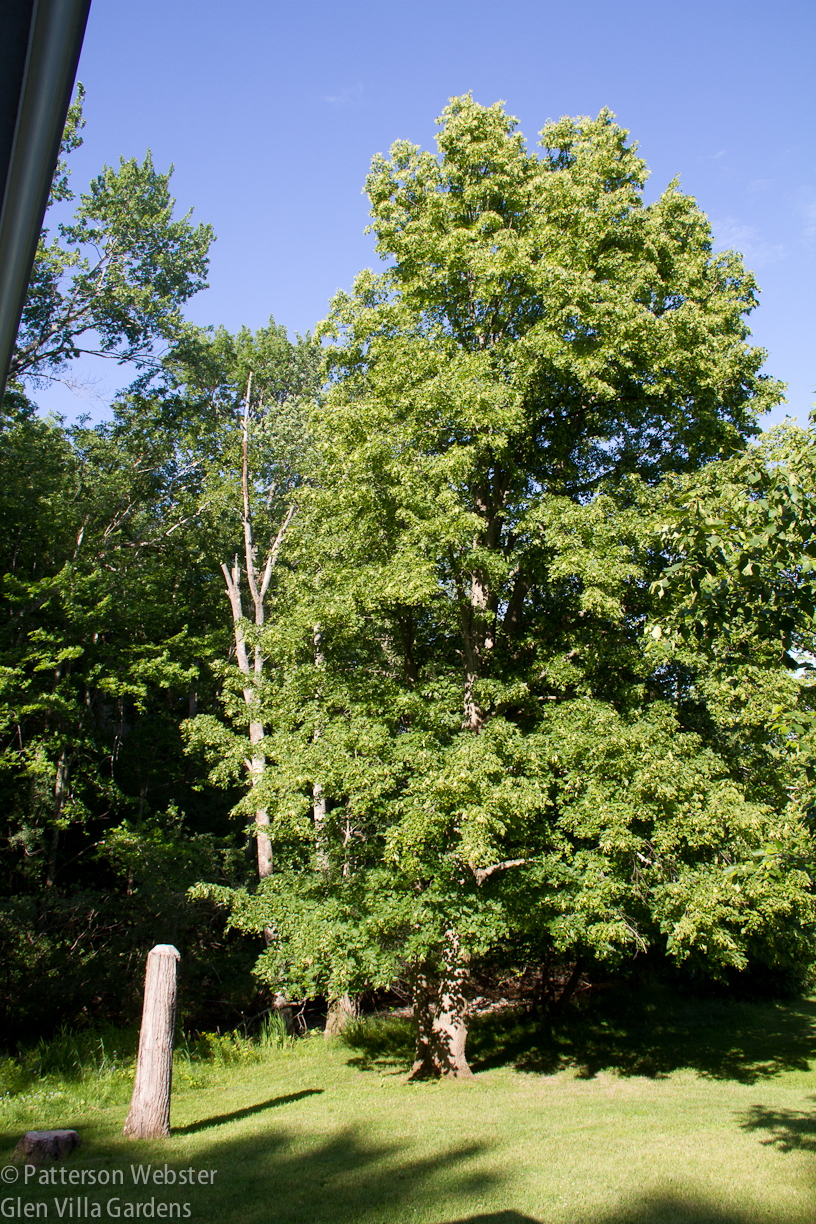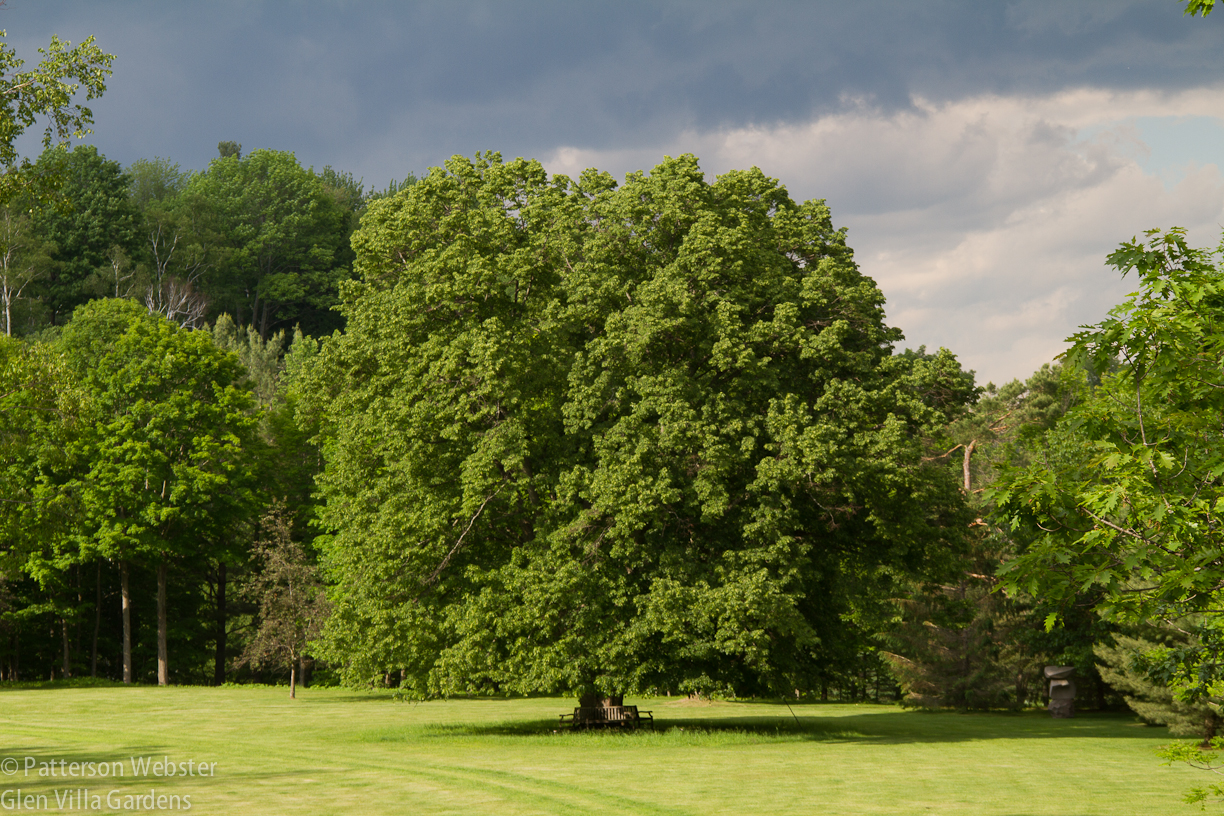A fully-grown tree doesn’t change that much in a short time, or so you may think. But compare two photos of the linden, or basswood, tree (Tilia americana) that stands in my Quebec garden, Glen Villa.
I took the first photo on June 13.
I took the second one two days ago, on July 8.
Even disregarding the difference in the weather conditions, to my eyes the tree in July looks droopier than it did in June, bent down as if it is carrying a heavy weight.
As it is. This close-up shows why.

A close-up shows the long leafy bracts that cover the linden tree.The small, inconspicuous yellow flowers have a very sweet smell.
Next door to our house is the result of this abundance, a seedling now grown to respectable size. My neighbour doesn’t know if the chopped off tree trunk was also a linden but based on the grain of the wood I suspect it was.

My neighbour’s linden tree is growing in a shadier spot than mine, next to a stream. These conditions will certainly affect its rate of growth and general health.
To the left of the tree is a trunk cut off about six feet from the ground. That tree and the ground-level stump to the left of it were cut down a few years ago — both trees were almost dead. I assume they seeded the linden beside them, which now has grown to some 40 or 50 feet.
Did my linden tree seed my neighbour’s trees? It is possible. If so, it would mean my tree is even older than the ones that died. Is my linden stronger? Its position in the open air and full sunlight gives it advantages that the more shaded trees didn’t have.
How long can I expect my tree to live? Wikipedia tells me that the life span of Tilia americana is 200 years. At best my tree is half that age. I know because I have photos that show the grounds of Glen Villa Inn, a hotel that burned down in 1909, and the tree isn’t visible in any of them. With luck, my tree could live another 100 years. Basswoods tend to sucker at the base and their narrow crotches and soft wood mean they often split and splinter. We have treated our linden well, fertilizing it annually and chaining together the large trunks to keep them from splitting. Even so, from some angles I can see that the canopy is not as round as it used to be.

The gap in the canopy worries me. I noticed it for the first time when I was preparing this blog post.
I hope this is not a sign that the tree is on its last legs, as it were. It is perhaps the most impressive natural features of our garden, Glen Villa. I would hate to lose it.
An interesting fact: Tilia, the genus name for my linden tree, is the Latin name for the linden or lime tree (no relation to the citrus tree). Swedish botanist Carolus Linnaeus, who developed the system of binomial nomenclature, took his name from a large linden tree on his family’s property.
With a large linden on my property, I seem to be in good company!






